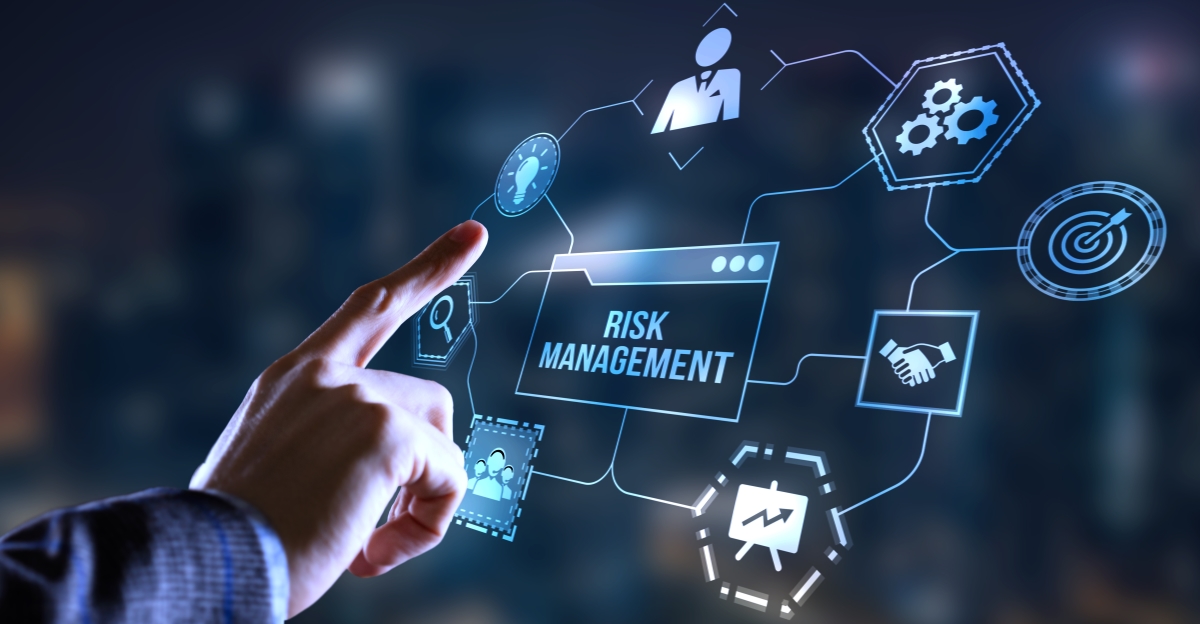Enhancing Operational Efficiency Through the Importance of Risk Management
Enhancing Operational Efficiency Through the Importance of Risk Management
Blog Article
Checking out the Value of Risk Management for Effective Decision-Making Techniques
In the elaborate world of company, Risk Management emerges as an essential aspect in the decision-making procedure. The capacity to identify potential hazards and possibilities, and strategize as necessary, can spell the distinction in between success and failure.
Comprehending the Idea of Risk Management
Risk Management, a vital component in decision-making, is usually misunderstood or oversimplified. Typically, it describes the identification, assessment, and prioritization of dangers to decrease, monitor, and manage the likelihood or impact of unfavorable events. It's not merely regarding avoiding adverse outcomes, yet also about acknowledging prospective possibilities. Risk Management includes disciplined and structured strategies, utilizing data and informative analyses. It requires a detailed understanding of the organization's context, purposes, and the potential dangers that might prevent them. From monetary unpredictabilities, lawful obligations, calculated Management mistakes, to accidents and all-natural catastrophes, it attends to various risks. Importantly, efficient Risk Management is not stagnant; it's a continual, progressive process that develops with transforming circumstances.
The Function of Risk Management in Decision-Making Processes
In the world of critical preparation and service procedures, Risk Management plays an essential function in decision-making processes. It helps in identifying possible risks and uncertainties that could affect the success of business objectives. By mapping these dangers, business can develop strategies to minimize their influence, ensuring organization connection and security. Risk Management thus becomes an important device in decision-making, assisting leaders to make informed options based on a detailed understanding of the risks involved. It motivates a positive technique, enabling organizations to expect and prepare for possible future scenarios. This significantly lowers the chance of unfavorable effects, promoting much more efficient and effective decision-making techniques. Therefore, Risk Management acts as a vital component in the decision-making procedures of any type of company.

How Risk Management Improves Strategic Planning
In the context of calculated preparation, Risk Management plays an essential function. Launching with the identification of potential risks, it further encompasses the application of Risk reduction procedures. The function of Risk Management is vibrant however not fixed, as it requires consistent monitoring and adjusting of methods.
Recognizing Prospective Risks

Implementing Risk Mitigation
Risk mitigation techniques can vary from Risk avoidance, Risk transfer, to run the risk of decrease. Each technique ought to be tailored to the specific Risk, considering its prospective influence and the organization's Risk tolerance. Efficient Risk reduction needs a deep understanding of the Risk landscape and the prospective effect of each Risk.
Monitoring and Adjusting Techniques
Though Risk mitigation is a vital step in tactical planning, continual surveillance and change of these approaches is just as important. It also provides an opportunity to assess the success of the Risk Management steps, allowing adjustments to be made where required, more enhancing tactical planning. Monitoring and changing Risk Management approaches is a crucial element for boosting a company's durability and strategic planning.
Instance Studies: Successful Risk Management and Decision-Making
On the planet of service and money, effective Risk Management and decision-making often work as the pillars of prosperous ventures. One such entity is a multinational oil business that minimized monetary loss by hedging versus fluctuating oil costs. In another circumstances, a technology start-up prospered by determining and accepting high-risk, high-reward methods in an unpredictable market. A worldwide bank, faced with regulative unpredictabilities, effectively browsed the circumstance through proactive Risk assessment and vibrant decision-making. These situations highlight the worth of sharp Risk Management in decision-making processes. It is not the lack of Risk, yet the Management of it, that usually differentiates successful companies from unsuccessful ones. These cases underscore the vital function of Risk Management in tactical decision-making. importance of risk management.
Devices and Methods for Reliable Risk Management
Navigating the intricate maze of Risk Management requires the ideal collection of devices and methods. These devices, such as Risk signs up and warm maps, aid in identifying and examining prospective dangers. Techniques include both measurable techniques, like sensitivity evaluation, and qualitative approaches, such as SWOT evaluation. These assistance in prioritizing dangers based upon their prospective impact and probability. Risk reaction strategies, a vital element of Risk Management, include accepting, avoiding, transferring, or mitigating threats. Tracking and controlling risks, via routine audits and evaluations, make sure that the webpage approaches continue to be efficient. With these tools and methods, decision-makers can navigate the facility landscape of Risk Management, thereby assisting in informed and effective decision-making.
Future Trends in Risk Management and Decision-Making Techniques
As we explore the vast landscape of Risk Management, it ends up being evident that the tools and methods used today will certainly continue to progress. Future trends point in the direction of an enhanced dependence on modern technology, with fabricated intelligence and artificial intelligence playing significant roles. These innovations will certainly allow companies to predict potential threats with greater dig this accuracy and make even more enlightened choices. In addition, there will be an expanding focus on resilience, not simply in handling risks but also in recovering from negative scenarios. Last but not least, the principle of Risk society, where every member of a company understands and associated with Risk Management, will certainly acquire a lot more prestige. These patterns herald a more positive and inclusive approach towards Risk Management and decision-making.
Verdict

Risk Management therefore ends up being an essential device in decision-making, Discover More helping leaders to make informed choices based on a thorough understanding of the threats included. Risk mitigation strategies can range from Risk evasion, Risk transfer, to risk reduction (importance of risk management). Reliable Risk mitigation calls for a deep understanding of the Risk landscape and the possible influence of each Risk. Risk action methods, an essential component of Risk Management, involve accepting, staying clear of, transferring, or mitigating dangers. The principle of Risk society, where every member of a company is mindful and included in Risk Management, will certainly get extra prominence
Report this page